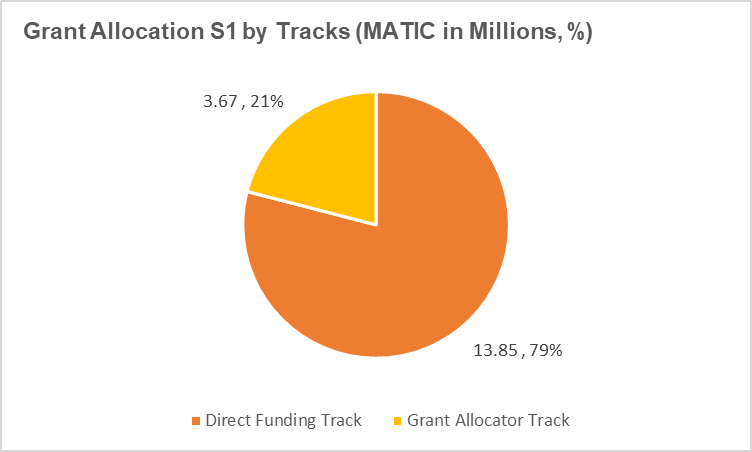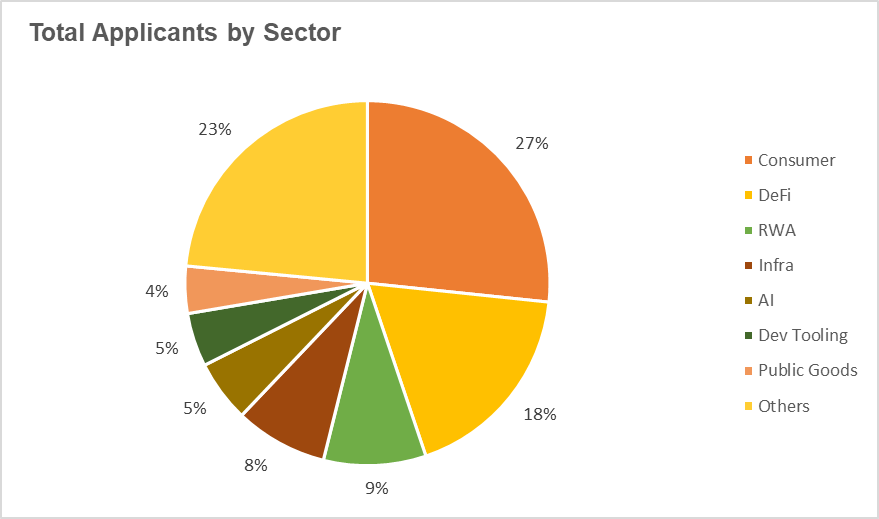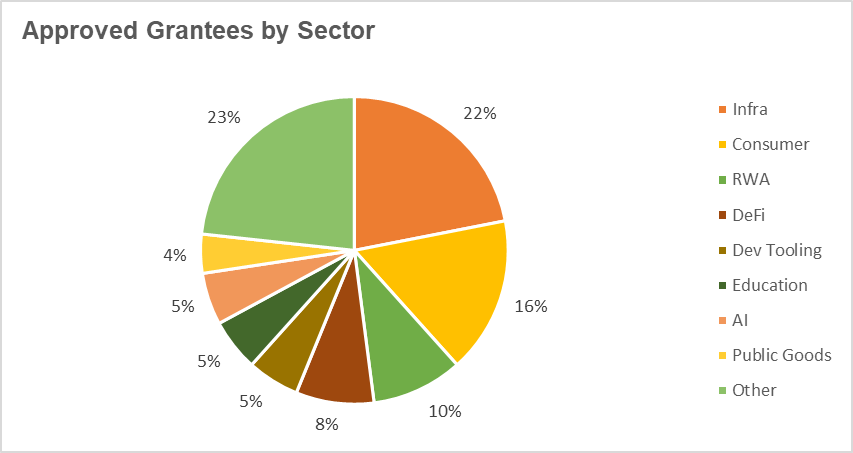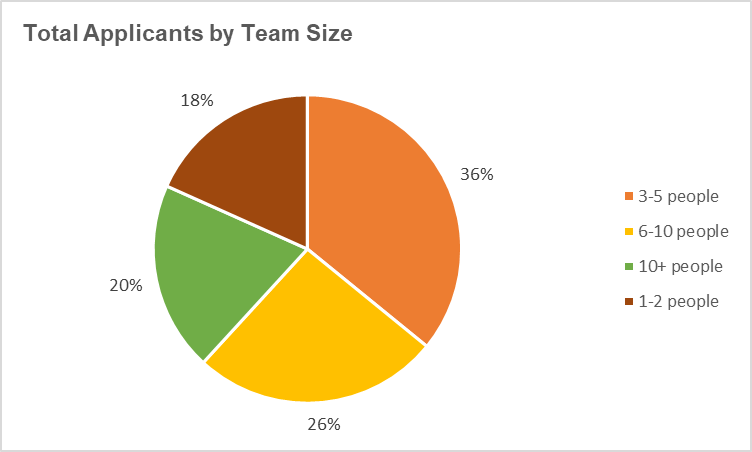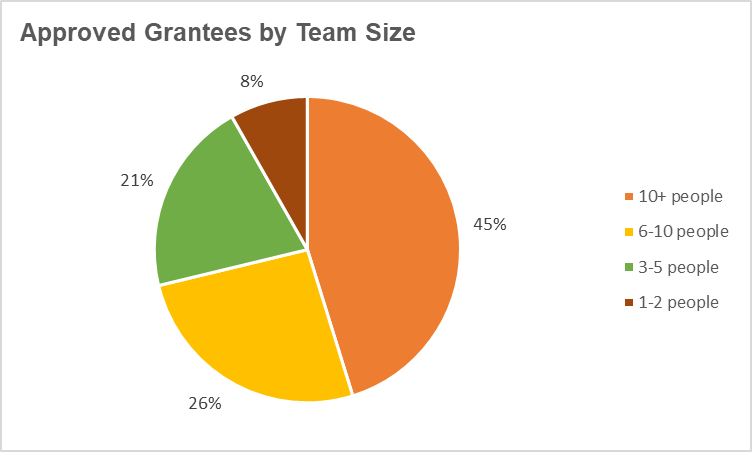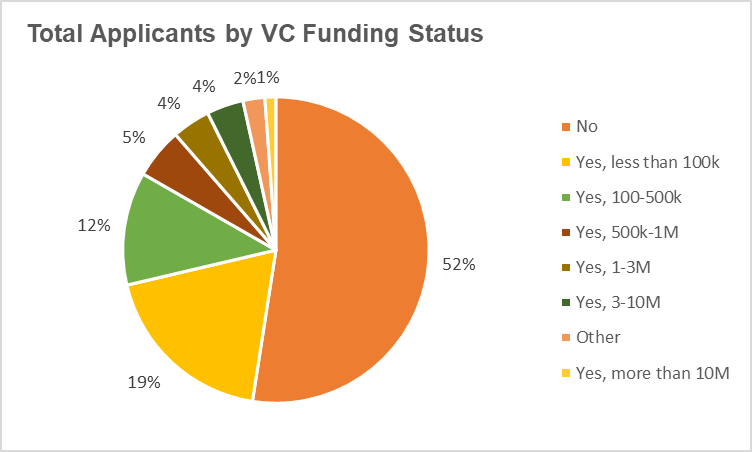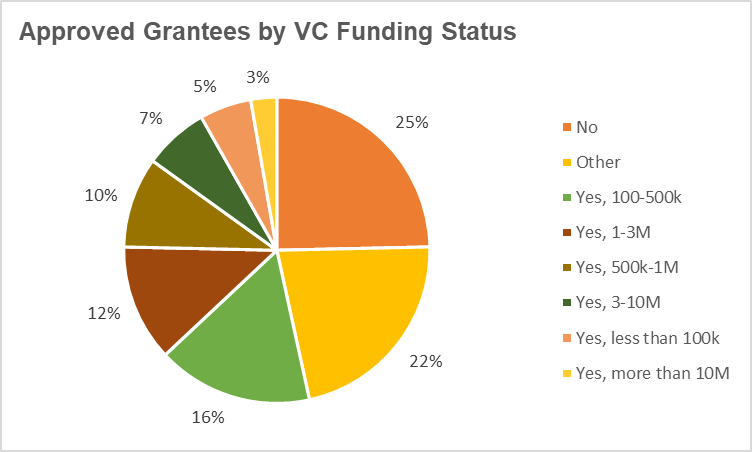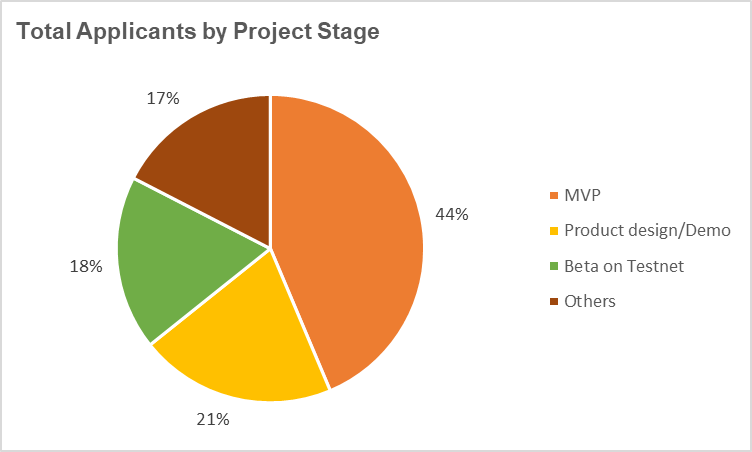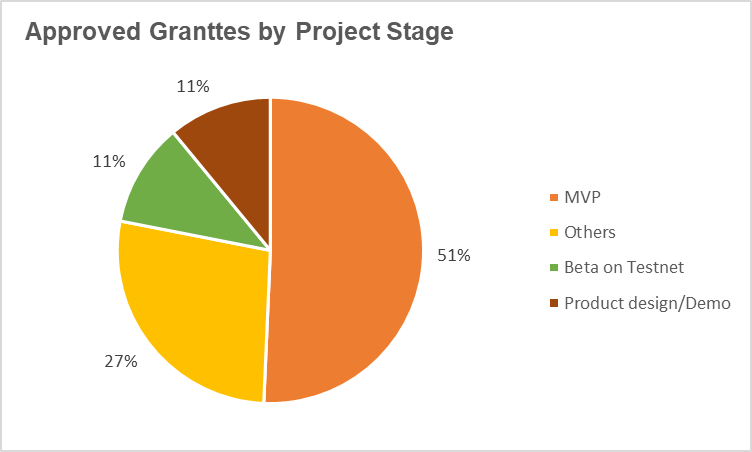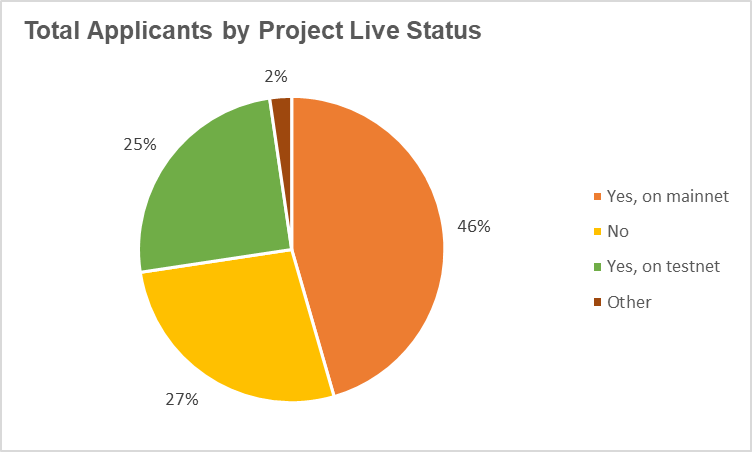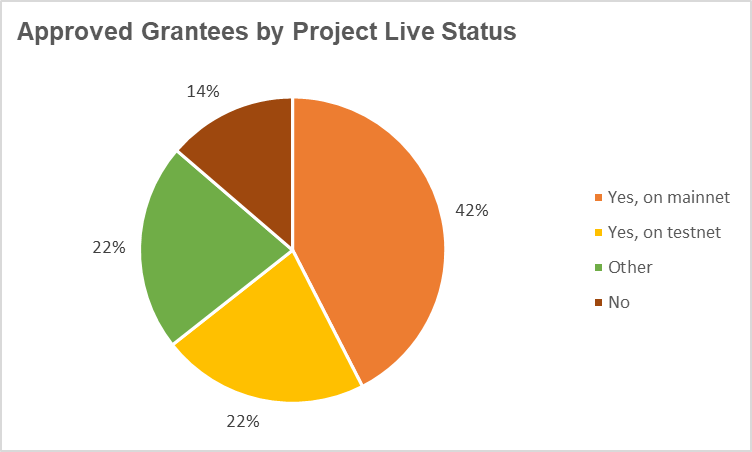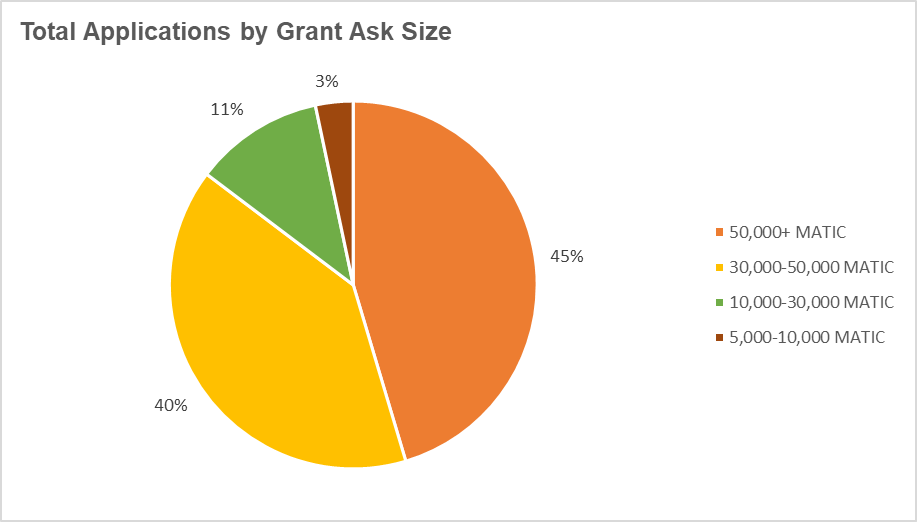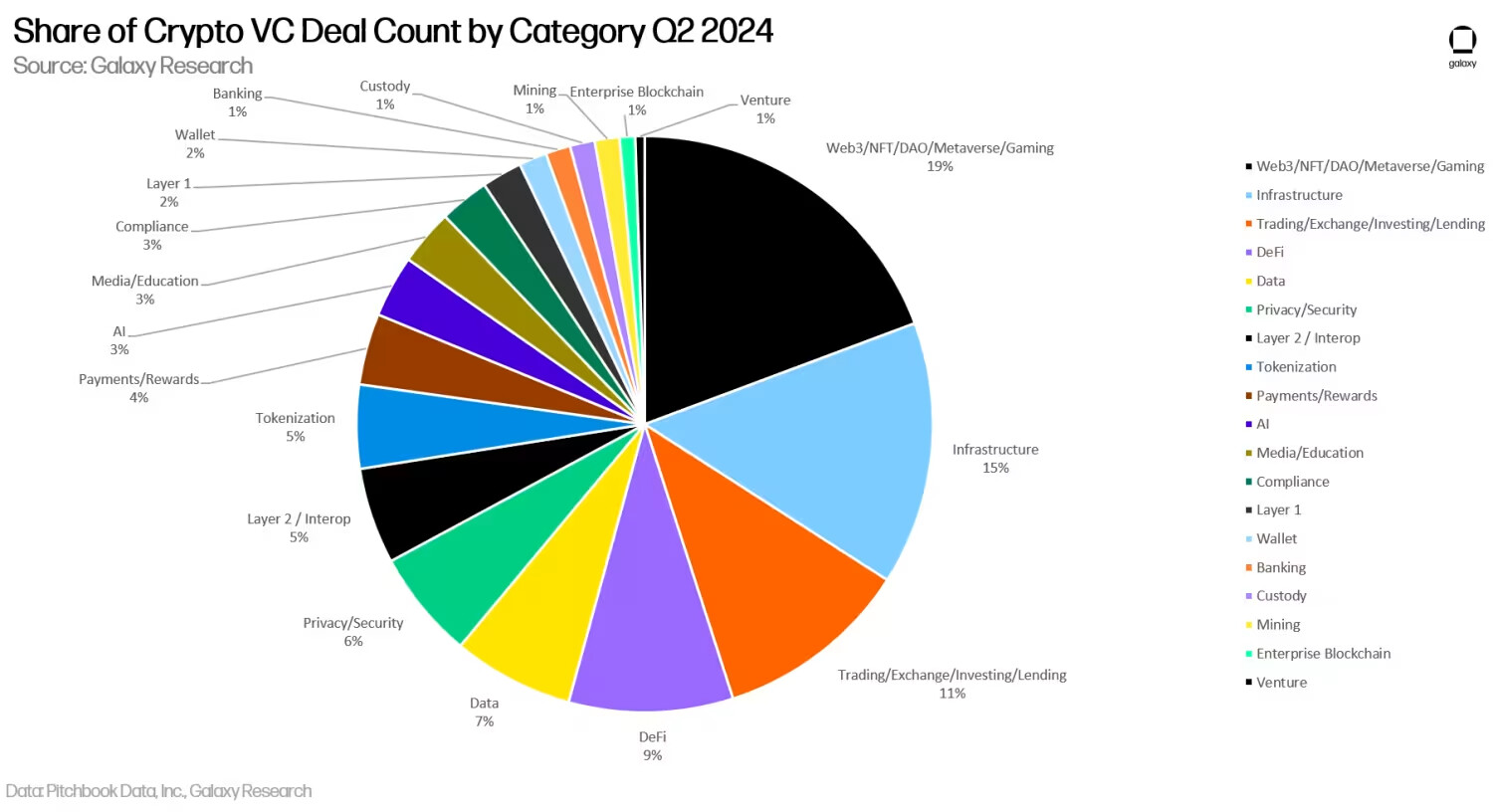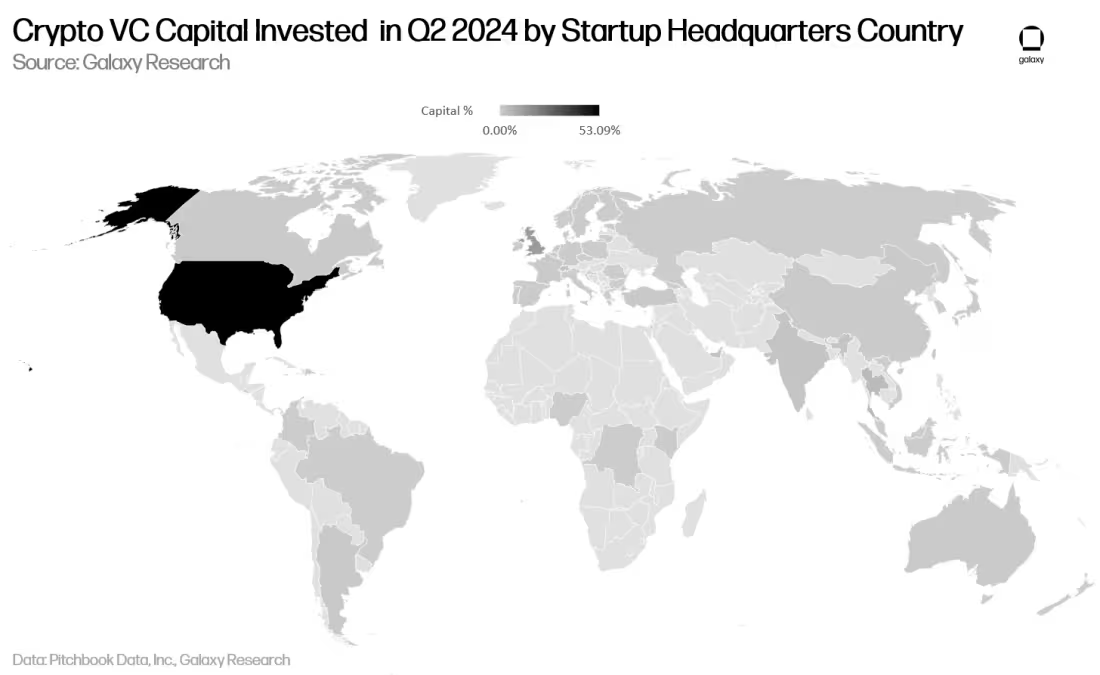Season 1 Transparency Report
Program Overview
The Community Treasury (CT) is a reserve intended to fund community growth on Polygon networks, governed via the Polygon Funding Proposal (PFP) framework. It is designed and introduced to provide ongoing economic support for further development and growth of the Polygon ecosystem.
Funded via a dedicated POL token emission stream, the Community Treasury provides strong ecosystem support during the period of early adoption, which is critical for the development, growth, and positioning of the Polygon ecosystem.
The Community Grants Program was spearheaded by the Community Treasury Board (CTB), an independent governance body responsible for managing the Community Treasury. The responsibilities of the CTB include, but aren’t limited to, creating a Community Treasury season strategy and postseason impact reports, approving grants and expenses, and managing a budget.
In line with the specifics laid out in PFP-2, the CTB established the season strategy, and laid out two distinct tracks to fund incoming grant proposals.
- Direct Funding Track: The direct funding track facilitates submissions from individual projects to the CTB. All prospective grantees require CTB approval to receive funding from the CT, following a process laid out by the CTB.
- Grant Allocator Track: The Grant Allocator track relies on specialized entities to facilitate the distribution of allocated funds to grantees. Similarly to individual projects, prospective Grant Allocators follow the processes laid out by the Community Treasury Board.
Note: At all times, the CTB is responsible for reviewing applications from all tracks and approving all expenditures from the Community Treasury, assisted by the Polygon Grants team as needed. The Polygon Grants team may propose funding proposals, but CTB approval is always final and necessary.
The CTB approved a total budget of up to 35M POL for the Season 1 of the Community Grants Program earmarked for a period from June 11, 2024 to August 15, 2024. The budget is part of the larger 1 Billion POL allocation for the community grants program announced on June 11, 2024. The major theme for Season 1 (S1) as part of CTB’s strategy setting mandate was “Consumer Crypto”, in line with the directives laid out in PFP-2 (Linked above).
For S1, out of the total approved budget of up to 35M POL, the CTB approved proposals amounting to 17.51M POL (50.05%). Out of this, 13.85M POL (79.04% of total approved grants) was committed under the Direct Funding Track, and 3.67M POL (20.96% of total approved grants) was committed through the Grant Allocator Track.
The Grant Allocator Tracks received a number of proposals as per the Season Strategy, and GA Call for Applications published on May 8, 2024. Out of these proposals, the CTB approved proposals from Thrive (consumer crypto Track) for 1.8M POL (49.08% of total approved grants under the Grant Allocator Track), Gitcoin (Farcaster Frames Innovator Track) for 550K POL (14.98% of total approved grants under the Grant Allocator Track), and Giveth (Quadratic Accelerator Program) for 1.32M POL (35.94% of total approved grants under Grant Allocator Track).
The Grant Allocator Track approved spends of 3.67M POL is inclusive of the program fee charged by Thrive Protocol, Gitcoin, and Giveth amounting to approximately 530K POL, while the balance allocated towards grants amounting to around 3.14M POL.
Thrive Protocol ran the Consumer Crypto Track as the inaugural Grant Allocator Led Track. During the period of grants, it received a total of 255 applications, and accepted 23 proposals for funding. A total of 6 proposals or 24% of the accepted proposals were in the AI x Crypto category, while 5 each (40% in total) were in the Gaming, and Phygitals category as laid out by the CTB in the description of the Consumer Crypto Track in the published Season Strategy.
Giveth ran the Quadratic Accelerator Program as the second Grant Allocator Led Track. During the period of grants it received around 200 applications, and funded 8 high quality projects awarding $600K or approximately 1.2M POL. Unlike other grants, Q/Acc is a unique initiative using augmented bonding curves which ensures that these projects will launch on Polygon zkEVM, and the liquidity is captured by the network.
The final GA led track in S1 was the Farcaster Frames Innovation Grants led by Gitcoin. The program aimed to incentivize builders to launch Frames apps on the Farcaster Social Protocol and offer a unique social mechanism to interact with crypto applications. The program approved 16 unique ideas across the consumer crypto strategy as laid out by the CTB, committing 500K POL in grants across the projects.
The Direct Funding Track received over 650+ applications, and CTB approved grants to the tune of 13.85M POL across 73 projects. Infrastructure accounted for the largest category both by number of projects funded, and total grants committed with 16 project proposals receiving approximately 5.4M POL or roughly 39% of the total grants approved under the Direct Funding Track. Consumer Crypto, RWA, DeFi, and Dev Tooling rounded up the top 5 sectors alongside Infrastructure securing 7.7M POL of the total approved grants constituting 62% of total projects, and 56% of total approved funding under the Direct Funding Track in S1.
It’s important to note that some of the deals were curated by the Polygon Grants Team directly and presented to the CTB. After due diligence, and thorough evaluations, the CTB approved 16 of the 73 deals under the Direct Funding Track through this channel. Infrastructure accounted for the majority of spending at a cumulative value of 4.92M POL, followed closely by two CDK deals totaling 2.07M POL.
This Transparency report was conducted in collaboration with the Blockworks Research team with data received from the CTB in order to provide insight into the grant tracks, the breakdown of spends and an overview of the applications received in the program. The spend reported will include the total grant funding that will be committed to applicants along with operational costs paid out to the CTB and key stakeholders as part of the grant process. Additionally, both quantitative and qualitative analyses will be provided for this season of grants.
Grant Evaluation Process
As described above, the first season of the Community Grants Program is split across 2 main tracks, namely Direct Funding Track and Grant Allocator Track. Shown below is a summarized version of the evaluation process followed under each track.
-
Direct Funding Track
a. Step 1 - Spam removal: The first step was a high level overview of all the proposals received and verification of the applications with regard to completeness, and meeting the minimum eligibility criteria as established in the Program Overview page listed here.b. Step 2 - Initial rubric-led review: Eligible proposals after filtering for Spam were funneled into this stage. Each application was reviewed on a score of 5 based on a publicly disclosed rubric published here.
c. Step 3 - Advanced review: Grant proposals qualifying the initial rubric review moved to the following stage where applications were discussed among all stakeholders, with the CTB recording their votes on each proposal. Projects acquiring a simple majority of votes (3 of 5) were approved by the CTB.
-
Grant Allocator Track
a. Step 1 - GA Call for Applications: The CTB called in applications from suitable Grant Allocators as per the GA Call for Application announcement here.
b. Step 2 - CTB evaluation and voting: Grant Allocators were chosen based on detailed evaluation of their respective proposals, and simple majority voting (3 of 5) by the CTB members.
Note: Grant proposals received by the Grant Allocators directly under their respective programs i.e. Consumer Crypto Track by Thrive, Q/Acc by Giveth, and Farcaster Innovator Track by Gitcoin were solely owned and operated by the respective GAs. The CTB did not individually approve grants, rather this responsibility was delegated to the Grant Allocators in line with the proposals approved by the CTB (refer point 2 above).
Each GAs had their own review and vetting process, and detailed updates will be published by the respective Grant Allocators as part of their respective Transparency Reports (More on that later.)
Key Criteria Assessed and Evaluated for Grants (for Both Tracks)
All applications across both tracks, namely Direct Funding Track, and Grant Allocator Tracks were evaluated based on two broad parameters:
- Quantitative criteria:
- Project milestone: Does the project provide clear, realistic, and measurable metrics?
- Onchain data: Are the KPIs addressed in the milestones clearly capture the relevant north star metrics relevant for the project’s category (different based on sectors e.g. DeFi (TVL, Volume), Gaming (Users, Txns), Infra (No of projects using the platform) etc.?
- Here’s a non-exhaustive list of some of the metrics:
- New wallets created
- Active wallets
- Total transactions
- Monthly transaction volume
- Overall transaction volume
- Generated fees
- Here’s a non-exhaustive list of some of the metrics:
- Alignment with grant eligibility criteria: Does the proposal meet the predefined criterion established under various programs across both tracks?
- Polygon Fit: Does the project bring significant value-add to the Polygon Network?
- Qualitative criteria:
In addition to quantitative KPIs, the board also considers qualitative product and feature-related metrics. These focus on how grant funds will be utilized to:
- Develop new features
- Create novel onchain experiences for Polygon network stakeholders and users
Conclusion
This multi-stage evaluation process enables the CTB to make informed decisions about grant allocations. By combining quantitative scoring, in-depth discussions, and a focus on both onchain metrics and innovative features, the board ensures that funded projects have the potential to drive meaningful adoption, retention, and overall growth of the Polygon ecosystem.
Financial Overview: S1 Grants
The CTB approved a budget of up to 35M POL for S1 of the Community Grants Program. At the end of S1, the CTB committed a grant total of 17.51M POL across Directing Funding Track (13.85M POL), and Grant Allocator Track (3.67M POL), and for associated costs related to Grant Operations in S1 (357K POL), included in the Direct Funding Track spending.
Grants Overview: Direct Funding Track
In the following sections, we break down the total grants received, and approved by Sector, Region, Team Size, Prior Funding, Project Stage, Project Live (onchain) status, and Project Grant Ask bifurcated in total number of applications, and total grants approved.
Key Takeaways:
- Under the Direct Funding Track, the CTB received a total of 694 proposals, and approved 73 grants.
- Combining NFT, GameFi, Marketplaces, and Social-Fi into the consumer category, Consumer Crypto accounted for 27% of the applications, and secured 16% of the total approved grants under the Direct Funding Track.
- DeFi accounted for the 2nd highest number of total grant proposals with 126 applications, accounting for approximately 18% of the total grant proposals. RWA, Infra, AI, and Dev Tooling closely followed suit to round up to the top 70% of the total applicants. In total, grant applications were received across 30+ sub-sectors across the crypto landscape .
- For approved grants, Infrastructure (16 Projects) accounted for the largest sector with 22% of total approved grantees, followed closely by Consumer (12 Projects) at 16%. RWA, DeFi, and Dev Tooling rounded up the top 5 accounting for 60%+ of the overall approved grants.
- Projects at the MVP stage accounted for 44% of total grant applicants, and accounted for over 50% of the approved grants.
- 80% of the total grant applicants were teams with less than 10 people, and they cumulatively accounted for 55% of the total approved grantees.
- Approximately 50%+ of the total grant proposals received this season were projects with no prior funding, and these projects accounted for 25% of the total approved grants.
- Approximately 45%+ of the total grant proposals received were projects live onchain on the Polygon Network, and these projects also accounted for 42% of the approved grantees.
- From a regional perspective, 59%+ applications received were projects with Multinational teams, and accounted for over 75%+ of the approved grants. That apart, teams from Europe, Asia, The Americas also saw significant participation in this season’s grants.
- Teams seeking 50K+ POL in grants constituted 45% of the total grant applicants, and accounted for 47% of the approved grantees.
By Sector
- Infrastructure and Consumer Crypto accounted for 35% of the total grant applicants, and 38% of the total approved grantees in S1.
- Apart from regular categories like DeFi, Tooling etc, this season saw 14%+ applications from categories like AI, and RWAs signifying a shift in market narratives. Projects in these categories accounted for 15% of the approved grantees in S1.
By Region
- Approximately 60% of the overall grant applications (400+) were Multinational projects, which represented75%+ of the approved grantees. Stats indicate that Crypto is truly global!
- North & South America cumulatively accounted for around10% of the total applications, and 6% of the approved grantees showcasing the continued adoption of Crypto by builders in the region
- Europe was the single largest region accounting for the 2nd highest number of applications, and grant approvals with over 105 grant proposals (about 15%), and 8 approved grants (11% of total approved grants)
By Team Size
- 80% of the total grant applications were from teams with a size of less than 10 people, and accounted for 55% of the approved grants
- Teams with more than 10 folks accounted for 20% of the total applications, and accounted for 45% of the approved grants in S1
By Prior Funding Status
- 50%+ of the total applicants in S1 had no prior funding of any type. These projects constituted 25% of the approved grants in S1
- Projects with prior fundraises of approximately 100-500K USD accounted for 12% of the total grant applications, and accounted for 16% of the overall approved grants
Project Stage
Almost half of the Grant Applications and Accepted Grants are in early MVP stages indicating an inflow of new developers and/or brand new projects to Polygon.
- Almost half of all applicants applying in S1 had an MVP (about 44%), and accounted for 51% of the approved grantees.
- Projects at the Product Design/PoC stage accounted for 21% of the total applications, and accounted for 11% of the approved grantees in S1.
Projects Live Status
- 300+ applicants (around 46%) of the total applicants seeking grants were live onchain at the time of applying, and accounted for 40%+ of the total approved grantees.
- Mainnet and Testnet launch together accounted for 70%+ of total applicants seeking grants, and accounted for 64% of the approved grantees.
By Grant Ask Size
- Over 45% of the total grant applicants requested for more than 50K POL, and accounted for 47% of the approved grantees in S1.
- Projects seeking 30-50K POL closely followed suit with over 40% of the grant applications, and accounted for 42% of the approved grantees.
Grants Overview: Grant Allocator Tracks
Thrive x Polygon Season 1 GA Track
In Season 1 of Polygon’s Community Grant Program there were specific grant allocator tracks with specific themes. One of them was orchestrated by Thrive Protocol and was focused on Consumer Applications. Here are the key points from the Thrive Protocol Polygon Season 1 track:
- Successful Funding of 23 Projects: Out of 255 applications, Thrive Protocol selected 23 high-potential projects to receive funding, awarding $800,000 USD in POL to boost web3 consumer applications within the Polygon ecosystem.
- Milestone-Based Payouts: Thrive Protocol ensured that all payments were based on the achievement of verified milestones. So far, 16 out of 23 projects have completed all their milestones, and $128,000 remains for projects still working towards their goals.
- Community Engagement Exceeded Expectations: The grant program generated over 13,000 contributions from 3,100+ unique contributors, surpassing the original goals. On social platforms, they achieved 332,000 impressions and 60,000 engagements.
- Onchain Impact: Three grantees—Smart Layer, DEFIT, and Unitap—have attracted more than 30,000 active users. Over 99% of users interacting with these projects were new to Polygon, highlighting genuine user growth.
- Strong Project Performance: The top five performing projects included 3Look, DEFIT, Xerberus, FANitum, and Smart Layer. These projects demonstrated strong milestone achievement and positive community impact.
For further details on these findings and other insights, you can refer to the full Thrive Protocol Polygon Season 1 Impact Report.
Gitcoin x Farcaster x Polygon Season 1 GA Track
Here are the key points summarizing the Farcaster Frames Program under the Polygon Community Grants program, orchestrated by Gitcoin:
- Program Overview and Budget: The Farcaster Frames program received 62 applications, with 16 projects approved. A total of ~500,000 POL has been allocated under the program
- Project Highlights: Notable projects include “Farcaster Gift” with 550 unique users, “Thane” focusing on DeFi accessibility, and “HelloPay” with 100+ daily active addresses (DAA) and growing transaction volumes. Many projects are progressing toward launching or completing key milestones.
- Milestone-Based Progress Tracking: Gitcoin has emphasized milestones and reviews to ensure project success. Some projects, like “FrameHack” and “RateCaster,” have already met their milestones, while others, like “Courtyard.io,” are working towards doing so.
- Onchain and Community Impact: Projects have begun generating onchain activity and user engagement on Polygon, such as “Dirt Labs” preparing to launch AI-art-based Frames, and “Mushee Labs” running cross-chain campaigns.
- Program Updates and Next Steps: One project was removed for missing milestones, with funds to be redistributed. Gitcoin continues to support grantees in marketing, monitoring ongoing milestones, and reviewing pending applications.
For more detailed insights into the Farcaster Frames Program, you can read the full forum post for a complete breakdown of the progress and key achievements.
Quadratic Accelerator x Polygon Season 1 GA Track Update
Here are the key points summarizing the Quadratic Accelerator Program under the Polygon Community Grants program, orchestrated by Giveth:
- Program Overview and Budget: The Quadratic Accelerator (q/acc) program received around 200 applications, selecting eight standout projects for this first cohort. As a novel tokenization primitive, q/acc bootstraps and deploys a project’s token economy using Augmented Bonding Curves and Quadratic Funding. The program received approximately 1.32M POL, with approximately 1.2M POL earmarked for grantees.
- Project Highlights: These eight projects won’t simply receive a grant; they will actively launch on zkEVM, significantly contributing to adoption and traction.
- Onchain Impact: Unlike traditional grants, the POL allocated to these projects will remain within the ecosystem. Thanks to the unique properties of Augmented Bonding Curves, even moderate demand from the first cohort will result in increased activity on zkEVM.
- Next Steps: Bonding curves for these projects are scheduled to go live in the second half of October, followed by quadratic matching rounds post-Devcon in November.
For more details on the q/acc program and information on the first cohort, please refer to the program website and the latest posts on Mirror.
Note: Each of the GAs will publish detailed Transparency Reports detailing the program specs, outcomes, and statistics at the completion of their respective programs. Since q/acc and Farcaster Innovator Tracks are still in progress, detailed GA reports will be published on the forum at a later date.
Analysis & Interpretation
The Polygon Community Grants Program has matched, and in some cases, surpassed the proportion of projects being funded in the Web3 Consumer Apps vertical as an alternative to Crypto VC funding, based on deal flow data from Galaxy. As shown in the “Grants Overview” section, over 27% of the grant applications and over 16% of the approved grants fell in the Consumer Application category. This is in line with Crypto VC where Consumer Applications make up approximately 19% of their total deal count.
The Polygon Community Grants Program has also attracted and funded teams that are more global compared to Crypto VCs who have primarily consolidated around North America. As mentioned in the “Grants Overview” section, over 90% of approved grant applications were either multinational teams or teams based outside of North America.
Additionally, according to the data on the project status for approved applications, a large portion of projects is in the MVP stage and have received minimal prior funding indicating that the community grant program is attracting either net new developers and/or net new projects, especially in the Consumer Crypto vertical.
Takeaways on Grant Operations
One of the main takeaways was the importance of grant proposals including clear and measurable milestones attached to portions of that grant. This allows the Community Treasury Board to ensure alignment between project teams and the proliferation of Polygon technology while still providing grant funding.
Running a mammoth grant program is no easy task. It requires managing multiple streams, and expectations of grantees. While no grant program can claim to be foolproof, and there are many learnings from running S1 of the Polygon Community Grant Program, this section will highlight specific initiatives and learnings from this program:
- Leveraging Tools: When receiving applications at scale, using tools becomes extremely important. For this program, the CTB leveraged Charmverse, a grants management platform to ensure information is adequately tracked, monitored, and control the overall workflow to drive efficiency.
- Using Experts: In order to ensure quality evaluations, from time to time, CTB empowered experts with better grasp of specific categories to chime in and share their objective evaluations to the board, this ensured niche projects had objective representation, and allowed the board members to make better decisions.
- Feedback: Providing credible feedback to scores of grantees is a challenge. Yet, for S1, the team has persevered to offer qualitative feedback to applicants whose grants were declined, showcasing their commitment to provide quality feedback to builders.
Some Learnings for Season 2
As we move into the next season of the Community Grants Program, we’ll focus on 2 main areas:
- Improved Comms: The CTB has heard from many sources about prompt communications of any program changes, and ongoing communication of progress on their application review process. Starting with S2, the CTB will seek to improve its communication processes to ensure timely, advance, and adequate communication exists between all applicants and the grants team.
- Greater Participation of Grant Allocators (GAs): During season 1, utilizing GAs improved efficiency in running the community grants program by leveraging their specialized knowledge of specific verticals and tracks. During Season 2, the Polygon Community Grants Program will double down on GAs to further improve efficiency.
Conclusion
Season 1 of the Polygon Community Grants Program attracted over 1,200+ projects across both Direct Funding, and Grant Allocator Tracks. In total, close to 17.5M POL was awarded across projects in the Direct Funding and GA led programs. In summary, 13.5M POL was awarded under the Direct Funding Track, 3.7M POL through various Grant Allocators, and 357K POL for various grant operational support initiatives.
The program saw scores of Consumer Crypto projects funded, and it is expected these projects will grow with time, and bring many more users onchain.
The grant program has had a stronger focus on Consumer facing applications compared to the Crypto VC landscape and showcases the demand to build Consumer Applications on Polygon.
Polygon is also gearing up for Season 2 of its Community Grants Program and the application portal will be going live soon. Further details will be made public on @0xPolygon
Note: During the course of S1, MATIC-POL migration was enacted. As a result, some of the grants have been paid out in MATIC as well. For the sake of convenience and consistency, the entire report is drafted in POL terms only. More details of the MATIC-POL migration can be found here.
